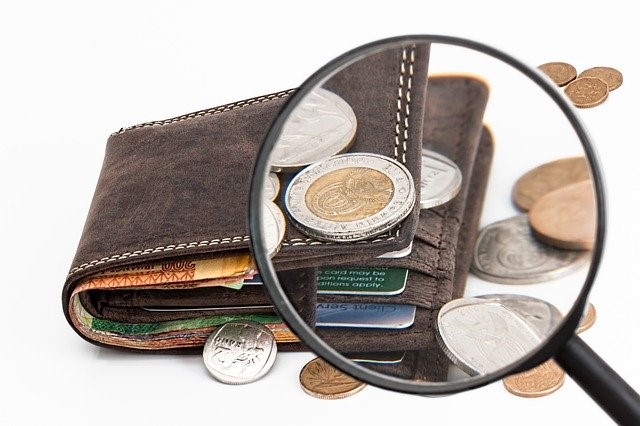Do you constantly struggle with a bad habit surrounding your finances?
Do you know what you need to do but can’t get started? Your brain is holding you back from correcting your bad habits.
This post will teach you how to change the bad habits that are costing you hundreds per month!

We are what we repeatedly do.
Excellence, then, is not an act, but a habit.
–Aristotle
My Bad Habit Story
It’s Friday and Payday. Right after work, I meet my friends at a local restaurant for dinner. There are about 5 or 6 of us normally.
Once the meal ends, I am picking up the entire tab for our group because I have plenty of money in my account.
The total price is around $80 to $100 dollars. Alcohol is not cheap you know! Now it’s time to do some random shopping for fun. I can’t wait!
This is the internal dialog encouraging me to spend money for fun before paying my bills on payday.
It cost me thousands per year. Most of the time I didn’t have enough money left over to pay my bills.
How can you expect to pay your bills when you are spending without limitations?
I make plenty of money but I was not spending it wisely. It is a horrible feeling finding you can’t pay a utility bill on time.
The following is what I learned to start making a change, finally.
More Articles You May Be Interested In:
5 Easy Ways To Save Money Without Budgeting
The Ultimate Guide To Budgeting
Why bad habits are hard to break
The brain has one main function – to conserve energy on repeat behaviors.
This allows you to brush your teeth, comb your hair, and shower without thinking about it. We’ll refer to it as your brain’s autopilot mode.
The autopilot mechanism causes the biggest hurdle of breaking a bad habit.
In 2012, the Massachusetts Institute of Technology (MIT) completed a habit study by placing rats into a T-shaped maze.
After many repetitions, the rats learned to turn left when they heard an assigned tone. As a reward, they received chocolate milk.
Later in the study, the scientists mixed lithium chloride into the chocolate milk causing light nausea for the rats. During the test, the rats kept turning left but stopped drinking the chocolate milk.
The scientists also discovered the repeated habit could not be forgotten due to repetition.
The psychological pattern created in the brain is the habit loop. The loop consists of the cue, routine, and reward.
However, it doesn’t mean you have an excuse to keep your bad habits, sorry. It just means you have to outsmart the habit loop to create a new habit in its place.
Effects of bad habits on the brain
There are three stages to create a habit loop in your brain. It is possible to create a new habit. You just need to make adjustments during certain stages.
Stage 1: The Cue
The cue puts bad habits into motion. Each one of your habits has a pattern and a unique cue. For example, receiving my paycheck encouraged my spending behavior.
Stage 2: Routine
This is the process of completing the actual behavior. For example, paying the check for my entire group of friends and shopping for fun.
Stage 3: Reward
The reward is what your brain receives in return for completing the behavior. The better the reward the easier the habit loop is to remember.
For example, in my story above I could buy things I wanted without thinking about my bills. How many of you are like me and enjoy forgetting about bills for a day?
If you are struggling to change a bad habit in your finances, the cue and the reward is where changes need to occur.
Don’t worry it is possible to trick your brain to create a better habit. You just need to learn how to modify the habit loop.
How to change a bad habit

These 5 steps may seem easy to follow on paper but it will take time and practice to start implementing them.
You have spent years creating your bad financial habits, right? Then it is unreasonable to think these changes can be made overnight.
5 steps to change a bad habit:
1. Identify a small bad habit you want to change.
2. Find a way to change the cue to avoid temptation.
3. Make small positive changes.
4. Start making good decisions to replace the bad ones.
5. Give yourself small rewards to keep you on track. You will achieve them faster and reinforce the new habit periodically.
The following is how I applied these 5 steps to stop overspending on payday:
The cue for my overspending was the act of being paid by my employer. My goal was to start paying my bills first on payday.
To start changing my bad habit I started taking another route home from work. It was a small change and removed the temptation to shop by avoiding shopping mall areas.
The unexpected reward I received was peace of mind. I knew there would be enough money to pay my bills that month.
Start small and work your way up to goals that are more difficult. You will not be able to kick all of your bad habits at one time.
Also, expect to fall off the wagon from time to time. The idea is trying to get your brain to stop auto-piloting your bad habits.
If you are concerned, you will not stick to your new habit find someone to hold you accountable. This person should be someone you trust and is constantly in your life.
I always like to rely on my closest friend who I grew up with when I am trying to make my most difficult decisions.
We have known each other since elementary school so she has no qualms about keeping me in line.
More Articles You May Be Interested In:
5 Easy Ways To Save Money Without Budgeting
The Ultimate Guide To Budgeting
Your Take Action Guide
Here are the steps to start putting this information into action.
Step 1:
Make a list of the bad financial habits you want to change.
Step 2:
Choose one bad habit from your list that will not take too much effort to start changing. Starting small keeps your frustration to a minimum when things do not go as planned.
Step 3:
Think through your bad habit to identify the cue. What causes you to keep completing the bad habit loop?
Step 4:
Follow the 5 steps to change a bad habit listed above.
Make the reward as enticing as you can so you will follow through.
Find a friend to hold you accountable if you are really struggling.
As you are starting out, focus on maintaining the new habit for a week, only 7 days. Then try to maintain the new habit for 2 weeks.
Keep building on the timeframe. If you miss a day, forget about it. Start fresh the next day.
Do not rush yourself to master the change perfectly in the first month. Perfection does not exist so stop looking for it.
You will fall off the wagon. The point is to get yourself back on track when you do fall.
More Articles You May Be Interested In:
5 Easy Ways To Save Money Without Budgeting
The Ultimate Guide To Budgeting
Resources for further research:
https://www.npr.org/2012/03/05/147192599/habits-how-they-form-and-how-to-break-them
https://learningcenter.unc.edu/tips-and-tools/changing-habits/
https://www.psychologytoday.com/us/blog/renaissance-woman/201607/how-change-unhealthy-habits
https://newsinhealth.nih.gov/2012/01/breaking-bad-habits
Subscribe and you'll receive our weekly posts right in your inbox. You'll also be one of the first to be notified when our free budget course opens. Hope to see you there!




